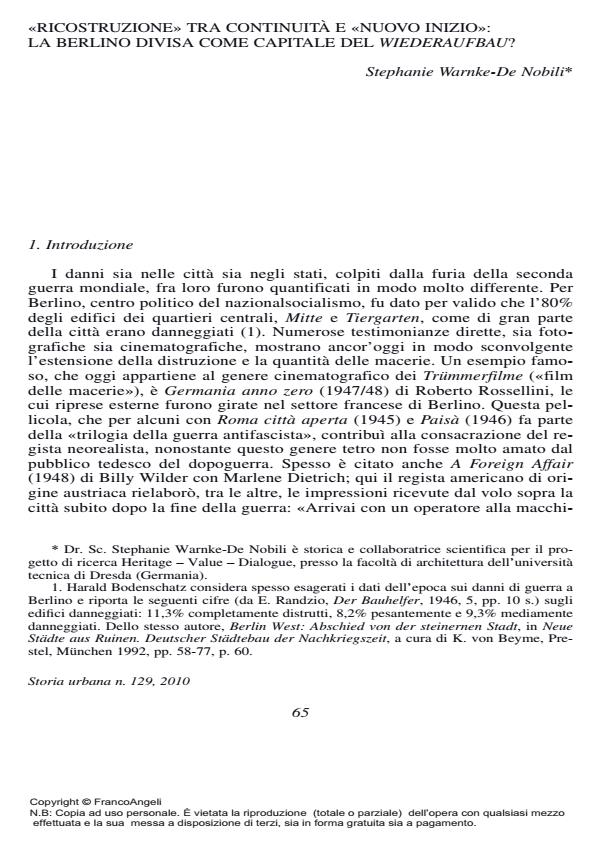Reconstruction between continuity and a "new beginning": a divided Berlin as the capital of wiederaufbau?
Journal title STORIA URBANA
Author/s Stephanie Warnke-De Nobili
Publishing Year 2011 Issue 2010/129
Language Italian Pages 22 P. 65-86 File size 177 KB
DOI 10.3280/SU2010-129003
DOI is like a bar code for intellectual property: to have more infomation
click here
Below, you can see the article first page
If you want to buy this article in PDF format, you can do it, following the instructions to buy download credits

FrancoAngeli is member of Publishers International Linking Association, Inc (PILA), a not-for-profit association which run the CrossRef service enabling links to and from online scholarly content.
The essays deals with the public role of historic buildings in the reconstruction of Berlin in the 1950s and 1960s when new, ambitious building projects significantly changed the cityscape. Already in the early phase of the cold war, and even more so after, during the postmodernist period, the official line towards Berlin’s historical architecture, was quite favourable and played an important role in the conflict among the opposing political systems. For the public, the significance of each historic building, whether it was demolished or preserved, was underlined by the Berlin media, and also in the memories of witnesses, in guide and photo books. The essay describes some moments of the debate by analyzing some significant events; the case of Unter der Linden Opera, the destruction of the Imperial Castle, the scandal concerning the Kaiser Wilhelm memorial church and a photo book on «murdered» Berlin all give an impression of the importance of old Berlin during the period of the new beginning after the Second World War.
Keywords: Berlin, Historic buildings, Reconstruction Cityscape
Stephanie Warnke-De Nobili, «Ricostruzione» tra continuità e «nuovo inizio»: la Berlino divisa come capitale del <i>Wiederaufbau</i>? in "STORIA URBANA " 129/2010, pp 65-86, DOI: 10.3280/SU2010-129003